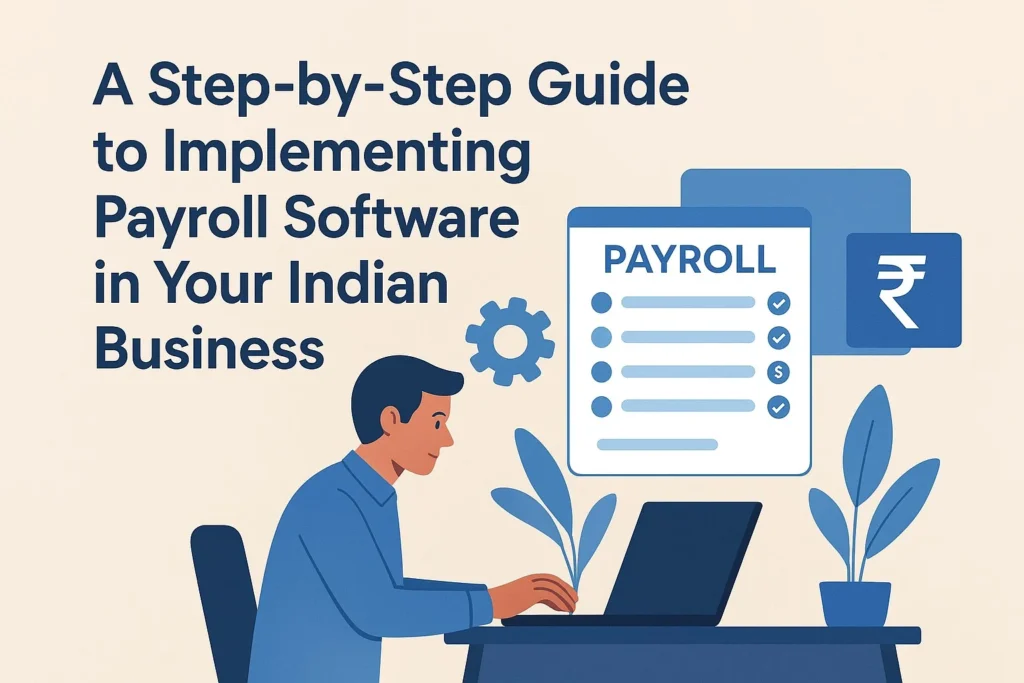In India’s changing business environment, efficient payroll management is crucial. It involves more than just making payments on time; following regulations and keeping employees engaged are also important. However, the growing complexities of payroll present a challenge for 87% of companies.
For companies, especially small and medium businesses (SMBs), the best payroll software in India helps improve operations with higher accuracy and confidence. Businesses that use automated systems face 70% fewer compliance problems and 30% fewer overall errors.
A careful and organized implementation process is essential to gain these advantages, and that is exactly what we will be discussing in this blog.
Discover more insights connected to this topic — dive into our related post now!
Why Automation is Essential for Compliance in India
The best payroll software significantly changes how businesses manage this important task. In India, the frequent changes in tax laws and labor regulations make automated systems essential for staying updated and compliant without the hassle of manual tracking.
Payroll administration is complex and often takes up a lot of time. The right platform offers:
Compliance Confidence: Built-in updates automatically apply the latest tax rates and labor laws. This is important for handling specific statutory deductions in India, including Provident Fund (PF), Employee State Insurance (ESI), Professional Tax, and Tax Deducted at Source (TDS).
Accuracy and Trust: Automated processing ensures employees receive their pay consistently and correctly, which is crucial for morale and loyalty.
Operational Efficiency: Integrating with accounting or time-tracking tools removes the need for duplicate data entry and reduces errors.
Solutions that are designed specifically for Indian business needs can simplify management. This is especially helpful when dealing with complex salary structures or regional tax obligations.
Phase 1: Preparation and Selection
A successful payroll implementation starts with organizing and verifying data, configuring system settings, and managing integrations. The process should begin with a thorough evaluation of your company’s needs.
Step 1: Define Your Requirements
Before looking at software options, clearly outline what your payroll process needs to handle. Defining these requirements boosts the chance of successful implementation.
Consider factors such as:
- The number of employees and types of workers (full-time, part-time, contingent).
- Pay schedules (weekly, biweekly, monthly).
- Tax jurisdictions and relevant labor laws.
- Must-have features, such as integration with existing HR tools.
Step 2: Select the Right Software
Evaluate platforms that meet your business needs, compliance requirements, feature sets, and ability to grow. Key features to look for in a suitable payroll system include:
- Automated compliance updates: The system must automatically apply changes to Indian tax rates and regulations.
- Flexible payroll cycles that let you run payroll monthly, weekly, or on demand.
- Detailed reporting for both internal management and statutory purposes (TDS, PF, ESIC, Form 16).
Phase 2: Implementation and Configuration
The implementation stage involves gathering precise data and configuring system settings specific to Indian payroll requirements.
Step 3: Gather Employee and Company Data
Collecting accurate data is crucial to avoiding errors or delays during onboarding. Companies need to gather information required for tax filing on employees’ behalf:
- Employee details, including full name, Aadhar number, PAN number, and UAN number.
- Bank details for direct deposit and benefits enrollment.
- On the company side, ensure you have your Tax Deduction and Collection Account Number (TAN), which is mandatory for companies that deduct or collect tax at source.
You must also categorize employees by classification (permanent, freelancer, part-time) and pay grade, as this impacts tax withholding.
Step 4: Configure the System Settings
Set up the essential preferences once the data is ready. This involves establishing payment cycles, defining overtime rules, and, most importantly, entering specific Indian statutory deduction settings. These deductions include PF, ESI, Professional Tax, and TDS. If the software offers compliance alerts, ensure they are enabled to notify you of changes to tax laws or deadlines.
Step 5: Integrate with Other Business Tools
Improve efficiency by linking your payroll software with time-tracking, attendance management, and accounting programs. This step cuts down on manual data entry and makes sure payroll data moves smoothly. For the best results, select a platform that brings all essential modules, such as attendance and leave, into one dashboard for real-time data syncing.
Phase 3: Testing and Go-Live
The final steps ensure the system works well and is ready for end-users.
Step 6: Run a Parallel Payroll Test
Before switching to the new system, run at least one test payroll cycle alongside your old process. Compare the results carefully. Pay attention to gross pay, statutory deductions, tax withholdings, and net pay to make sure they meet your expectations. This testing phase is important for identifying configuration errors or missing data before employee pay checks are impacted.
Step 7: Train Your Team and Go Live
Provide training specific to each role. Payroll administrators need to know all system functions, tax rules, and how to generate reports. Employees should receive guidance on using self-service portals to access pay slips and update personal details. After training is finished, process your first official payroll. Monitor the outputs closely to ensure that payments are on time and correct.
Wrapping Up
Implementing payroll software is a key step. It shifts payroll from a behind-the-scenes task to a reliable and compliant operation. A clear, step-by-step approach, including defining requirements and running a parallel test, ensures your new system is accurate, meets complex Indian regulations, and can grow with your business. Ongoing monitoring after implementation, which includes regularly updating tax tables and improving workflows, will support long-term efficiency.
Spotlight on excellence — check out our featured post that’s trending right now!






